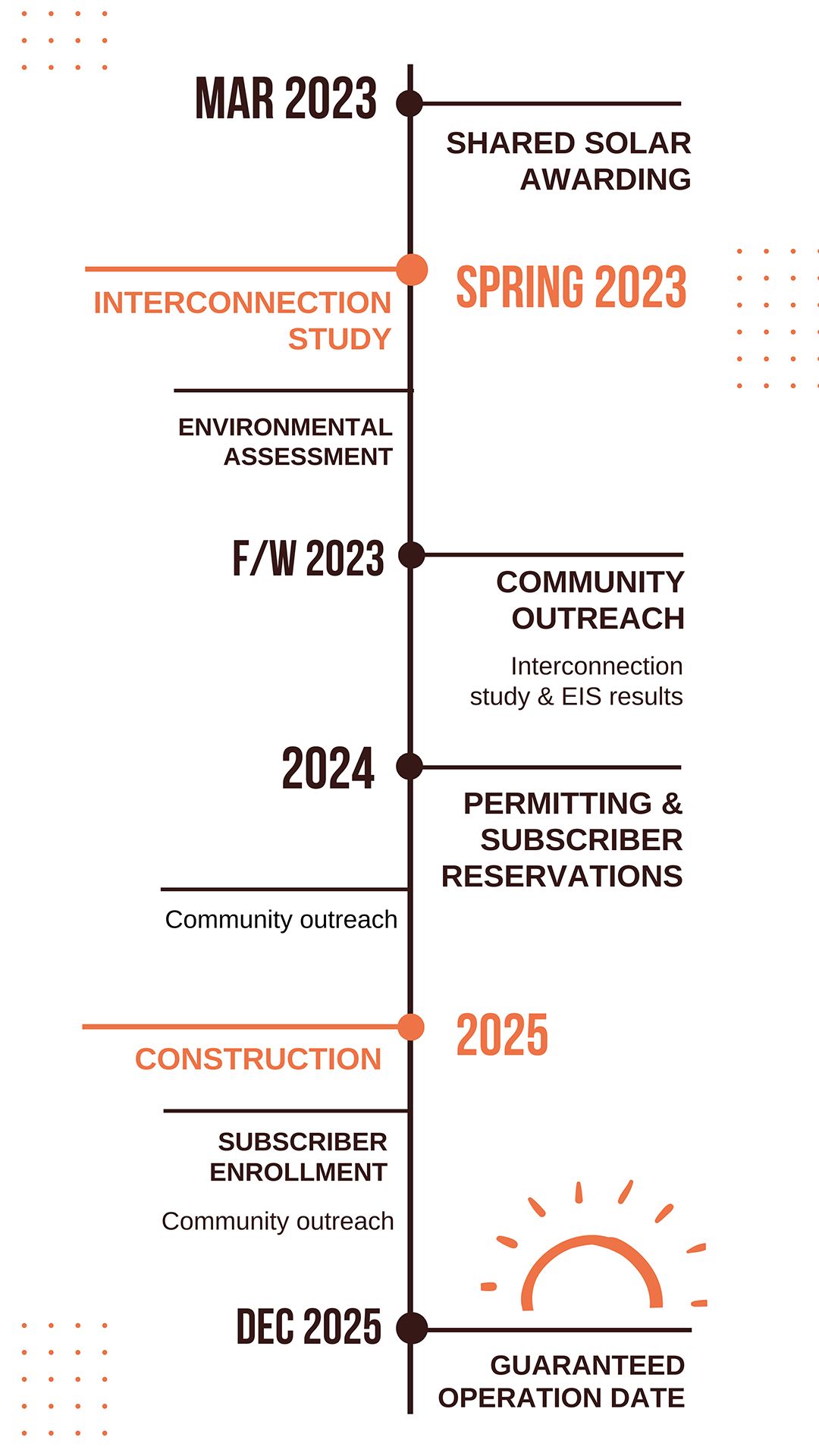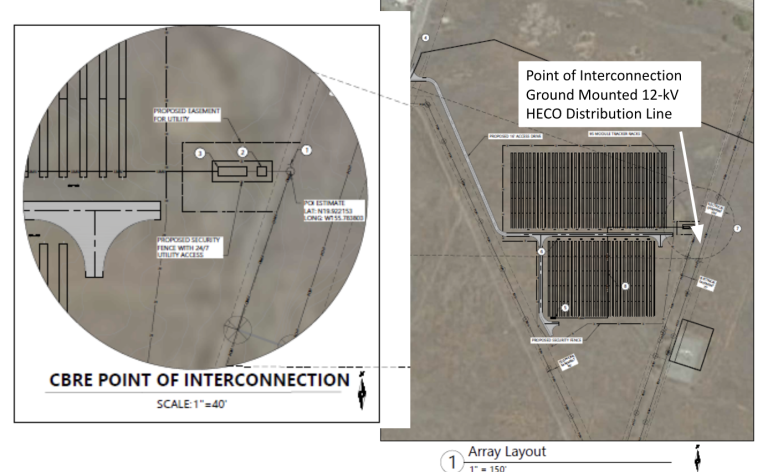Waikōloa Community Solar, LLC is developing 2 shared solar farms near Pua Melia and Waikoloa Roads: WCS I and WCS II. Each project will have 2.5MW of solar installed for residents, businesses, and non-profit organizations to subscribe to a portion of the solar energy and reduce their HECO electric bills.
These solar farms were awarded from the Community-Based Renewable Energy (CBRE) Phase 2 request for proposals and will be a part of HECO’s Customer Renewables Program on Hawai’i Island.


Current WCS 1 & 2 site in Waikōloa Village
WCS 1 & 2 will be built on a portion of Parcel 680020160000 near Waikōloa and Pua Melia Road, Waikōloa, South Kohala, HI.
The projects’ solar panels will be mounted on steel racking infrastructure which track the arc of the sun throughout the day.
Features:
Tax Map Key Number: (3) 6-8-002:016
Zoning Land Use:

The projects’ solar panels will be mounted on steel racking infrastructure which track the arc of the sun throughout the day.
Features:
WCS 1 Site Details
Net Nameplate Capacity
2.50 MW
Net Energy Potential Projection for the Facility
6,424(MWh)
Solar Farm Acres
9
Point of Interconnection
19.919134, -155.785168
Type of Interconnection
Pad Mounted 12-kV Line Tap
Subscription Allotment
100% Residential
Location

The location of WCS 1 is near current 12-kV utility poles where it can connect.

Impervious Coverage
Current
Solar Relative To Entire Parcel (716 acres)
Solar Farm Area (9 acres)
Solar Racking & Fencing
0%
0.15 acres, 0.02%
0.15 acres, 1.6%
Equipment Pads
0%
0.07 acres, 0.01%
0.07 acres, 0.8%
WCS 2 Site Details
Net Nameplate Capacity
2.50 MW
Net Energy Potential Projection for the Facility
Solar Farm Acres
9
Pad Mounted 12-kV Line Tap
60% Residential
40% Commercial
Location

WCS 2 is adjacent to WCS1 and is also near a current 12-kV utility pole where it can connect.

Impervious Coverage
Current
0%
0%
Helping the planet is our core business.
We take to heart that our projects are built without damaging the ecosystem around it from the design stage to execution. We do this by following all applicable environmental standards and approvals prior to construction.
What We Plan to Do
Our project sites for WCS 1 and 2 are suitable for solar, according to local zoning, and we plan to:
Environmental Planning
Some environmental planning details that are usually asked are below. If you’d like to know more, feel free to reach out.
Contact Us →
Site Assessment
We will conduct required environmental assessments for the WCS 1 and 2 project sites to determine what we need to mitigate or prevent during construction and operations.
We anticipate the construction and operation of the community solar farms will have no adverse environmental impact on the island.
Land Use Classification
WCS 1 and 2 will take a portion of a 716-acre parcel that is entirely classified in the state land use classifications as Agricultural (AG) that allows for solar energy facilities.
The parcel is also within the check zone for the Waikōloa Maneuver Area Formerly Used Defense Site (WMA FUDS). The parcel received a Conditional No Further Action letter from the State of Hawaii Department of Health (HDOH).
County Zoning
We have received written confirmation from the County Planning Director that solar will be a permitted use.
Details
Hawai’i County zoning code does not have a reference for solar farms at this time; however, Hawaii Revised Statutes (HRS), as amended, does reference solar farms as a permitted use within the State Land Use Agricultural district.
As the subject property has soil classified by the Land Study Bureau as “E” or “Very Poor” soil, the following section in the HRS will apply:
HRS 205-2 (6) Solar energy facilities; provided that:
© 2024 Waikōloa Community Solar, LLC. All Rights Reserved.